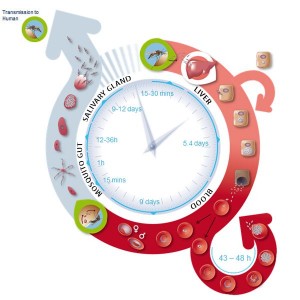
Malhotra S, Yen JY, Honko AN, Garamszegi S, Caballero IS, et al. (2013) Transcriptional Profiling of the Circulating Immune Response to Lassa Virus in an Aerosol Model of Exposure. PLoS Negl Trop Dis 7(4): e2171. doi:10.1371/journal.pntd.0002171
The following new articles are publishing in PLOS NTDs this week:
Neurocysticercosis (NCC) is the most common cause of adult acquired epilepsy worldwide and one the most frequent parasitic infections associated with chronic morbidity encountered in the United States, but study of the disease remains underfunded. Here Dr. Theodore Nash and colleagues discuss the importance of NCC as a preventable and treatable infection, as well as advancements, goals, reasons for lack of material support and a roadmap for advancement.
Studies in Mali, Nigeria and Senegal have shown contradictory results concerning the efficacy of long-term ivermectin distribution for onchocerciasis elimination. Dr.
Hugo Turner and colleagues explore how assumptions regarding aspects of treatment effects can affect temporal projections of infection load and prevalence in highly endemic African savannah settings.
Despite the significant public health issues and potential biodefense risks posed by the Lassa virus (LASV) little is known of the human immune response to this hemorrhagic fever. Dr. Shikha Malhotra and colleagues outline here an unbiased genomics approach to map the temporal host response in the peripheral blood mononuclear cells of non-human primates exposed to LASV. Their results provide a picture of the host’s circulating immune response to LASV exposure and demonstrate that gene expression patterns correlate with specific stages of disease progression.
The following new articles are publishing in PLOS Pathogens this week:
As with many intracellular infectious agents, the protozoan Toxoplasma gondii has a quiver of effectors that it uses to co-opt host cell functions including several from a paralogous family of protein kinases and pseudokinases that are injected into the host cell from the apical secretory organelles known as rhoptries (ROPs). In this Pearl, Dr. John Boothroyd presents how these ROPs were found and the current state of knowledge about their function.
Hepatic inflammation during chronic HCV infection is considered to be the primary catalyst for progressive liver disease and development of liver cancer but the underlying molecular mechanisms are not well understood. The results from Dr. Amina Negashand and colleagues identify HCV-induced IL-1b production by hepatic macrophages as a critical and central process that promotes liver inflammation and disease.
Emerging evidence suggests that the p65 family of guanylate-binding proteins (GBPs), which is upregulated by interferon gamma, play an important role in host defense against intracellular pathogens. Dr. Elizabeth Selleck and colleagues provide findings that demonstrate that Gbp1 plays an important role in the IFN-c-dependent, cell-autonomous control of toxoplasmosis and predict a broader role for this protein in host defense.








